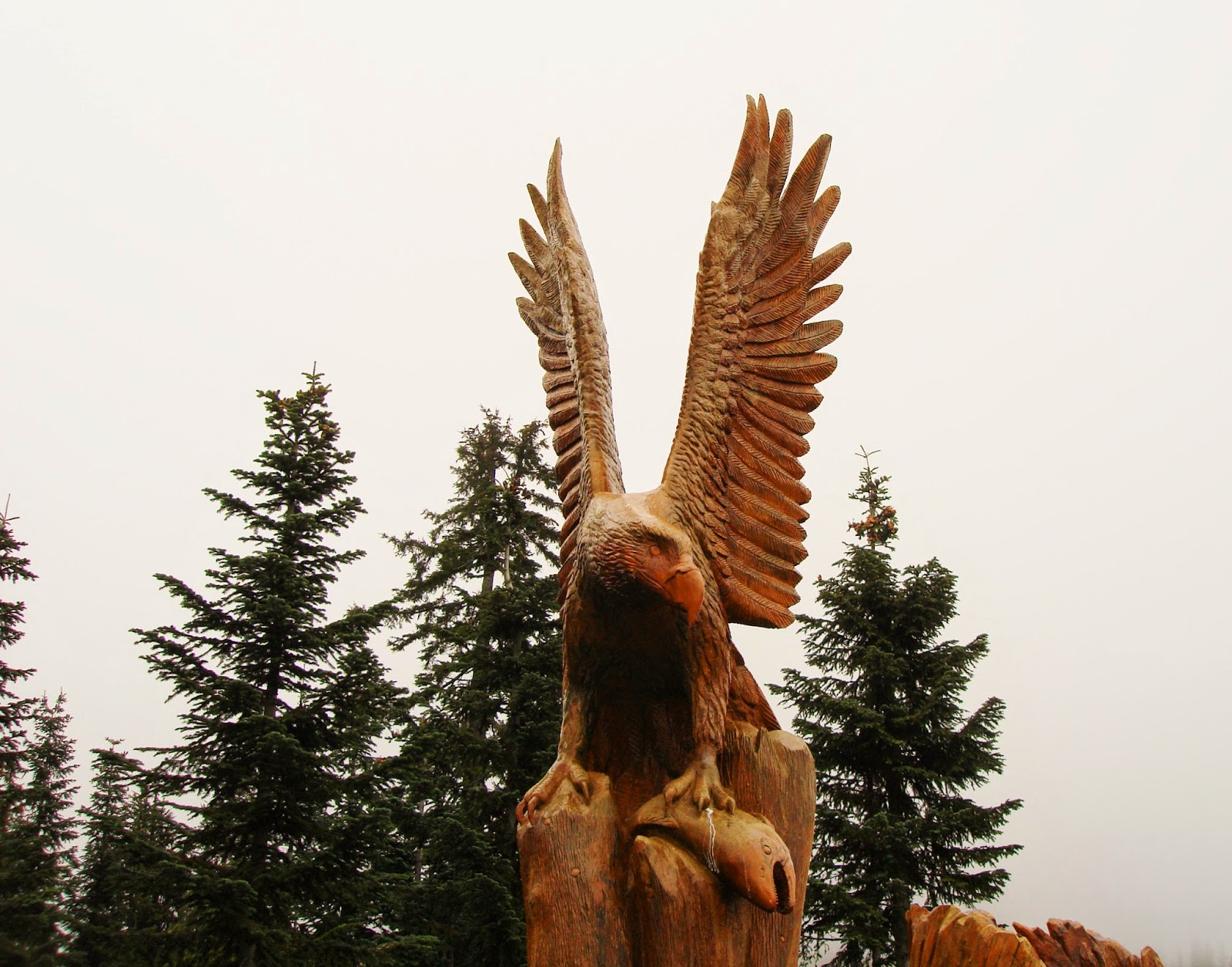Look North in Vancouver to see the nearby mountain lights hanging in the evening sky. Grouse Mountain is one set of lights in North Vancouver, located on the other side of the inlet.
Grouse Mountain
Exceeding 4000 ft. (1200 meters) in altitude at its peak, Grouse Mountain offers alpine skiing in the winter and hiking trails and other activities in summer and autumn. A breathtaking view awaits you. An occasional high-flyer is deposited via helicopter on the top of Grouse. Four chairlifts and 26 runs are approximately half an hour away from the city of Vancouver. The Grouse Grind is a popular trail for fitness enthusiasts, which runs directly up the fall line paralleling the gondola towers. Be sure to come prepared.
 |
| Grouse Mountain Tram, Vancouver's North Shore, by DG Hudson |
Grouse Mountain had its first lodge built by hand by Scandinavians in the 1920s with wood they carted up themselves. In 1976, a second aerial tramway was built by 'Garaventa', which became known as the Super Skyride. This is now the main tramway, using much larger gondola cars and depositing passengers at a separate terminal. The main lodge is only accessible by tram, hiking trail or helicopter from the parking lot midway up the mountain.
***
Chainsaw Wood Carving
Grouse Mountain
Lining the pathways between various activities
 |
| Wood carving of Bear with Salmon, Grouse Mtn., by DG Hudson |
A picturesque location, Grouse Mountain has been used in several productions:
- 1994 The X-Files episode of 'Ascension'. Actor Duchovny dangled from a gondola in one scene.
- The ski lodge and facilities were used in filming the cartoon, Mr. Magoo.
- Nelly Furtado, singer-songwriter, filmed the video for Spirit Indestructible at Grouse Mountain.
 |
| Regal Eagle with Fish, Grouse Mtn, North Vancouver by DG Hudson |
Always check the website to plan your visit to Grouse Mountain.
 |
| Carved Bear, Grouse Mountain, N. Vancouver, by DG Hudson |
***
Have you seen or visited Grouse Mountain? Do you like aerial views or are they vertigo-inducing?
Do you remember the story of Paul Bunyan, a giant lumberjack in American folk tales? (Before chainsaws) OR Have you heard of 'Monty Python' lumberjacks?
Please leave a comment to let me know you were here, and thanks for stopping by. I'll respond!
***
References
A Monty Python skit of The Lumberjack song: Youtube
https://www.youtube.com/watch?v=5zey8567bcg&feature=kp
Wiki of the song
http://en.wikipedia.org/wiki/The_Lumberjack_Song
Wiki for Grouse Mountain
http://en.wikipedia.org/wiki/Grouse_Mountain
The website
https://www.grousemountain.com/
***





